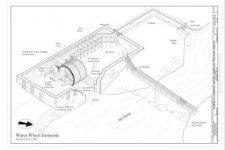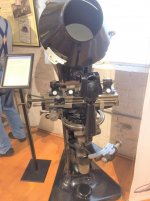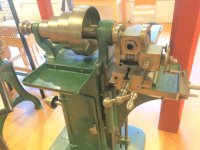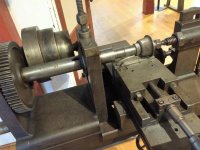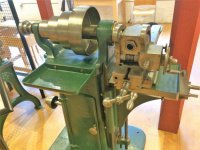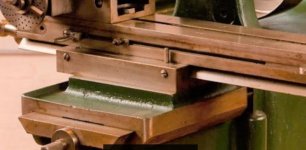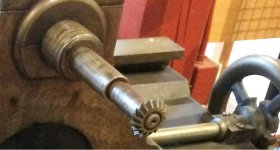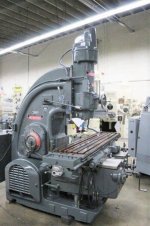G&L4nahalf
Cast Iron
- Joined
- Jul 27, 2014
- Location
- Temporarily Florida

Per prior arrangements to measure and photograph the machinery, we arrived Sun May 8, 2017; about 3pm, coming in from Bangor, Maine. The staff was waiting for us, and gave us the full red-carpet treatment. This was the first week-end the museum was open for the warm season, but there were not many visitors.
Windsor is a small town, pop ~3500, located just off Interstate 91, putting it less than a half-days drive from about anywhere in the northeast. I 91 is a beautiful road, well designed for the mountains, light traffic, and you can sail right along.
But at the start of our country in 1891, Windsor was the mover and shaker for Vermont, and continued until some time after the Civil War.
Starting from a little before the Civil War, and extending a little past it, Windsor was the major hub for machine-tool development and improvement; taking over the position that Harper's Ferry had some 40 years earlier under Roswell Lee and Colonel Bomford (per info supplied by cncFireman). The milling-machine was invented here in Windsor, by one Joe Brown of Brown&Sharpe fame in 1861, and the milling-machine is second only to the engine-lathe in significance for furthering modern technology. This is the heritage for Windsor, and I think they did a magnificent job in preserving it.

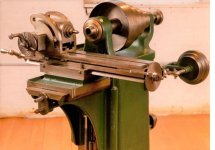
In the words of the museum :
The Museum preserves the heritage of the mechanical arts, celebrates the ingenuity of our mechanical forebears, and explores the effects of their work on our everyday lives. The American Precision Museum, housed in the original Robbins & Lawrence Armory, now holds the largest collection of historically significant machine tools in the nation.Precision manufacturing touches us all. Without it, we would not have the mass communication, rapid transportation, modern standards of sanitation and medical care, abundant food and clothing, or the leisure for universal education.The tools and the methods which make mass production possible were pioneered at the Robbins & Lawrence Armory in Windsor, Vermont. Using precision metal and wood cutting machines and high standards of accuracy, Robbins & Lawrence proved the effectiveness of a new type of manufacturing that would soon be known as the American System. Across America, a powerful machine tool industry grew up, flourishing especially in New England and the northern Midwest. Today, even in the age of plastics and microprocessors, the concept of precision manufacturing provides the foundation for modern industry around the world.
The emphasis of the museum is demonstrating the links from the early inventions to transmission to modern-state machine-tools. They have a number of examples to do this. They also have a number of interactive exhibits that allow even children to make items on machinery.
For the manner that they carried out their purpose, they are # 1 in the country.
For Civil War buffs interested in the machine-tool development from that era, this is the #1 place to go.

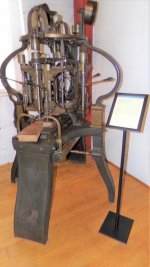
about 1850 Inletting machine. Ames Mfg Co, Chicopee, Mass. This machine cut a recessed bed into the gunstock, in just the right shape to receive the lockplate. It could cut out a lock-bed in as little as 45 seconds. Others call this approach to manufacturing - the "American System". Here in the USA, we call it MASS PRODUCTION..
I enthusiastically recommend this place as a top spot to go..
George
Last edited:





